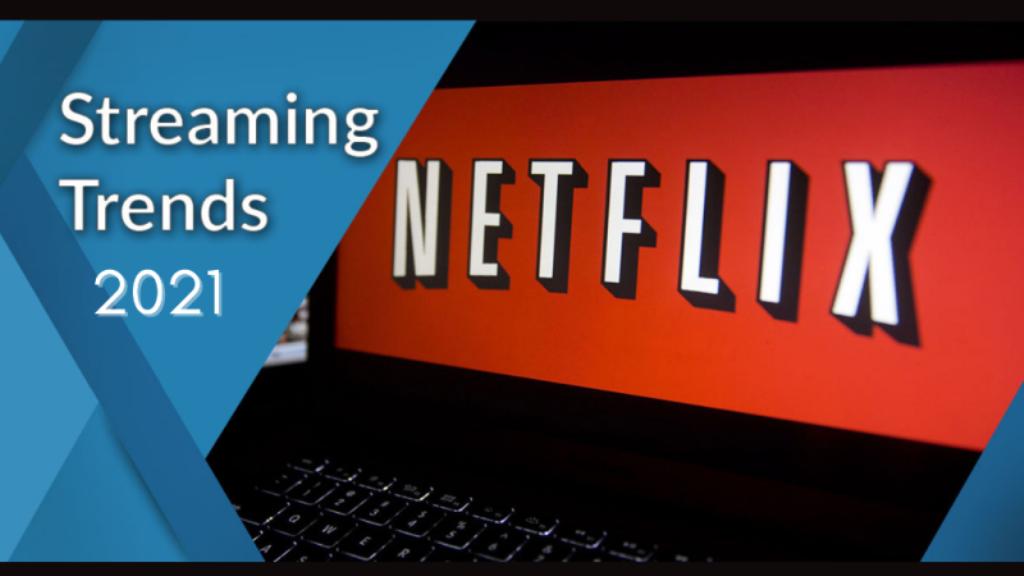The novel coronavirus hasn’t just changed the way we look at our health’s; it has also changed the entire way we live our lives, edging us towards a brand new normal. Over the past year, several efforts were made to assist the healthcare industry in stopping the spread of the virus. These efforts included lockdowns worldwide, social distancing, and self-isolation as soon as one felt any symptoms.
Decidedly, over the past year, most of the world’s population has spent more time indoors than outdoors. One of the best ways of keeping yourself entertained during this time has been to explore streaming options, catching up on your favorite movies and trying out new games.
This is why in this article; we’ve decided to take a closer look at how streaming behavior has changed over the past year and identity specific shifts in online streaming trends all over the world.
From what we know so far, the entertainment industry has blossomed more than ever in the past year because of the increase in media usage worldwide. There are so many options that media companies and platforms are finding it hard to keep their audience engaged at one platform.
Other entertainment options like theatres, cinemas, and other entertainment options are still closed in several countries, concerts have switched to online LIVE, even sporting and boxing events have focused more on their audience. This is also one of the reasons why people have started spending so much time streaming online when in need of a break.
Looking at numbers, according to a recent survey, the total amount of time spent online watching TV or videos has increased by 40% just in the past year. It won’t be too far fetched to say that videos, shows, and movies have turned out to be a place of comfort for people to turn during these challenging times. Recently, TV and media have become the go-to for most people when looking for entertainment.
Further in this blog, we’ll look at some of the most prominent streaming trends and shifts that we’ve observed during the past year. But before we get into those, let’s talk a little about our streaming habits.
Table of Contents
Recent changes in video consumption habits
It is no secret that our viewing habits and behaviors have massively evolved over the last couple of decades. Just a few years ago, we were limited to watching our favorite shows in front of the televisions at home for a limited amount of time, and were forced to sit through adverts that would riddle the shows and movies.
We’d have to wait for days for our favorite episodes to air and make sure we were available at the specific time it aired so that we don’t miss it, or it would be gone forever. Needless to say, video entertainment required exemplary patience.
Then, YouTube came around, and the media and entertainment industry was thrust into a whole new world of possibilities. Shortly after, videos went mobile, the ads became shorter and options to skip them became available. Mobile phones meant that we could watch anything, anywhere—no one was setting their dinners in front of the TVs to catch the 8 pm sitcoms anymore; we’d watch the episode later online once it was uploaded.
With the introduction of mobile phones, long commutes, drives, and empty hours spent waiting for someone at the airport also became entertaining. This was not only because we now had access to sitcoms and music any time we wanted, but also because education and learning new things was never more accessible. Suddenly DIY projects and new skills were no longer all that out of reach.
Our streaming habits in the world of COVID have transported us back to diners in front of the TVs and family shows that we set time for. No one has given up YouTube videos or cell phones, but streaming platforms and services have become popular, getting us all to pull out our sofas in front of the TV in the lounge again. Since people are being forced to stay home more and streaming platforms starting to take advantage of that. This brings us back to our next trend shift!
The sudden popularity of streaming services
A recent survey has concluded that most households with a Wi-Fi connection have started to stream videos on their TVs (CTV) again. Reportedly, the number of people viewing videos on their CTVs jumped from 44 million to just over 50 million in the past year, marking a massive market leap.
After analyzing the trending streaming behavior, it was discovered that the four most popular streaming platforms were Netflix, Amazon Prime, Disney+, and Hulu. Since the platforms host different shows, users now need to get multiple subscriptions to watch everything they want to.
Understandably, online streamers today are spending a lot more time on the internet than in the past. A significant chunk of this time, taking work out of consideration, is spent on digital videos. Additionally, specific social media platforms have also started encouraging video content, like Facebook Live, Instagram IGTV, and now Instagram Reels, which has successfully captured user interest.
Another important highlight is that music videos have started to become popular again as users have more opportunities to watch them. They are already engaging more with video content than they ever did before.
More inclusive media
We’re all so used to watching native English content; however, we observed more inclusivity in media content through the past decade. Streaming services have slowly started exploring waters beyond Hollywood to host on their platforms.
German, Spanish, Turkish, Portuguese, and Korean shows have started appearing and have gained considerable popularity on Netflix. A German show called “Dark”, a French series called “The Hookup Plan”, a Korean show “Crash Landing on You”, and even a Japanese Reality series “Terrace House” all have ranked in Netflix’s “top ten most-watched” list during times of their releases.
Non-English programs have proven to be a massive hit among international audiences. So much so that Netflix alone added around 130 new non-English seasons during the past year. The popularity isn’t only reserved for Netflix; Amazon Prime Video has also reportedly started adding more shows that are native to France, Germany, Japan, India, Spain and even Mexico.
Extended business applications
As video content got popular, many companies made it a point to incorporate video streaming in their marketing strategies and operations. Different organizations started using video streaming to help their customers engage with the business better.
Since videos are interactive, customers have a better time understanding certain products, services, the benefits they offer, and whether they need it or not, aiding more informed decision making.
Not only that, ever since the business and the corporate world shifted online to encourage safer interaction, video streaming was also observed to serve as an extension of services. Through COVID, we all saw virtual appointments with doctors, therapists, and consultants become popular.
This not only made it much easier and more effective for citizens to connect with healthcare professions while living through a pandemic, but it also cut down travel costs by a great deal.
A look at streaming trends by industry
Avenues like live streaming have become remarkably popular with e-commerce companies that have continued to leverage technology to promote their products and services. As mentioned before, since videos are interactive, they help visitors, clients, and customers engage with the business better, helping in forming an all-rounded understanding, leading to informed decision making.
The same applies to educational institutions that have switched to online lessons and classes to help their students keep up with their studies in a safer environment. Cutting down the time it would take to get ready in the morning and take the bus, encourage students to engage in video demos and visual elements vital to learning.
IOT video streaming
IoT or the Internet of Things has been popular for a while. People have been using IoT video streaming in different capacities, including endoscopic surgeries and even law enforcement, for a bit now. These were targeted to provide stakeholders in certain sectors better support after the surge in the number of devices connected to the internet in the past couple of decades.
It is predicted that by 2025, the approximated number of devices connected to the internet would be in the neighborhood of 30.9 billion, and the number would also include active gateways and devices that enable live streaming functions.
Law enforcement agencies and the medical sectors aren’t the only ones using IoT systems and streaming. Some consumer applications of IoT networks and video streaming include CCTV cameras connected to doorbells, and baby and pet monitors, among several others. With the introduction of 5G, the domestic and industrial uses of IoT, especially its video streaming feature, are predicted to expand further.
Another way IoT video streaming has become popular is due to its use I cars through customized sensors and high illuminating infrared cameras. IoT and 5G connections can enable cars to communicate with other devices with 5G or their dedicated short-range communication technologies. It is predicted that by 2023, this use case is expected to explode to around 19 million endpoints.
Final words
Over the past couple of decades, streaming trends have highlighted significant changes in the video consumption habits for the average consumer—especially after COVID-19. Streaming is now more popular than ever before, and there will never be a better time to take advantage of the situation.
As the most important technology of the 21st century, video is a valuable asset that can be used in many ways. Whether you’re looking to expand your business, make knowledge more available, or share your expertise with people, video can lend a helping hand to your online efforts.
To encourage safer online streaming, it is recommended to use a VPN for streaming. A VPN makes being online a safer experience. It also helps its users unblock geo-restricted channels and content, giving them a broader variety to choose from.



